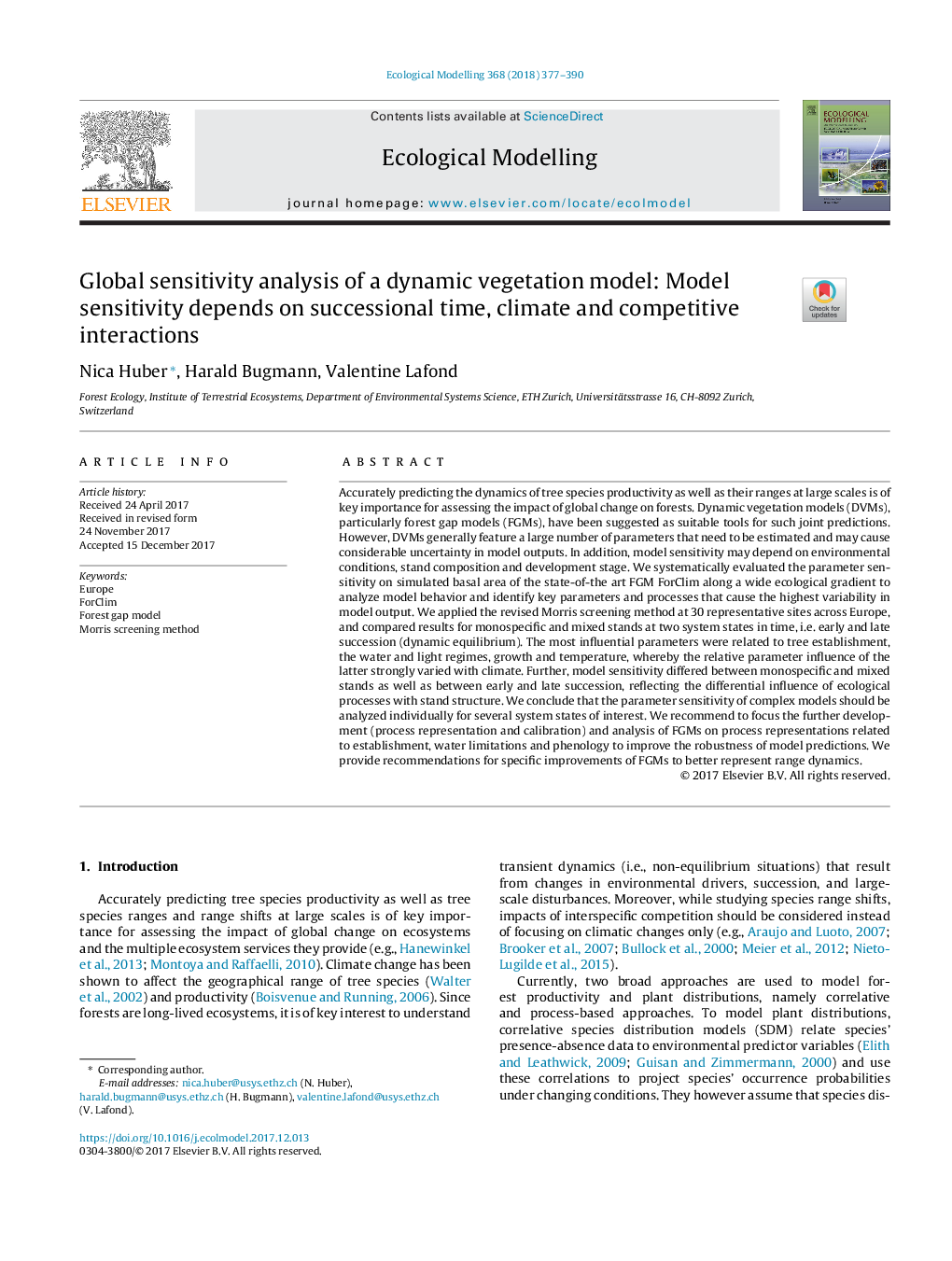ترجمه فارسی عنوان مقاله
تجزیه و تحلیل حساسیت جهانی یک مدل پوشش گیاهی: حساسیت مدل به زمان جانشینی، محیط زیست و تعاملات رقابتی بستگی دارد
عنوان انگلیسی
Global sensitivity analysis of a dynamic vegetation model: Model sensitivity depends on successional time, climate and competitive interactions
| کد مقاله | سال انتشار | تعداد صفحات مقاله انگلیسی |
|---|---|---|
| 113701 | 2018 | 14 صفحه PDF |
منبع

Publisher : Elsevier - Science Direct (الزویر - ساینس دایرکت)
Journal : Ecological Modelling, Volume 368, 24 January 2018, Pages 377-390

